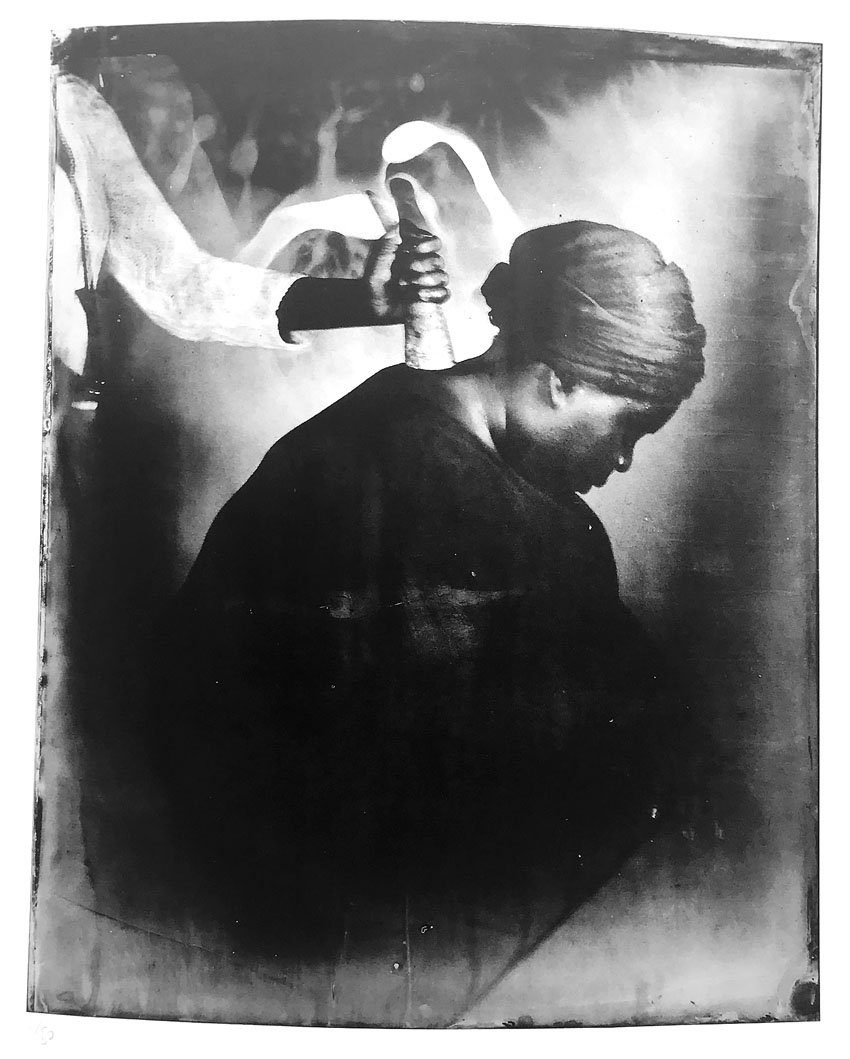Khadija Saye 1992-2017 236 Westbourne Grove W11 2RH Until August 7th
BY LUCY LAVER
WITH THE reconvening of the Grenfell Tower Inquiry on Monday and the recent and ongoing global Black Lives Matter uprising, this is a pertinent and timely outdoor exhibition of the remarkable photographic works of the late Khadija Saye.
The exhibition was unveiled by Labour MP David Lammy earlier this week in Notting Hill.
The large intriguing prints are displayed across the façade of 236 Westbourne Grove W11, and the powerful exhibition coincides with the launch of an art project, the Khadija Saye IntoArts Programme, that aims to diversify the industry, working with young people from disadvantaged and marginalised backgrounds.
It was founded in her memory by the charity, IntoUniversity, who had nurtured Khadija’s artistic talents as a North Kensington student from childhood, and her mentor Nicola Green, a British portrait painter and the wife of David Lammy.
Khadija Mohammadou Saye, also known as Ya-Haddy Sisi Saye, was a London born British Gambian artist and activist who lived and worked in the flat she shared with her Mother, Mary Mendy, on the 20th floor of Grenfell Tower in urban North Kensington.
Although Kensington and Chelsea is one of the smaller and wealthier boroughs in London, North Kensington is a relatively deprived area where its pockets of poverty often sit in stark contrast to the wealth of those around them.
Despite this, at 16 Khadija won a full Arnold Foundation scholarship to the esteemed Rugby School and went on to study a BA in photography at UCA Farnham with a particular interest in post-colonial theory and identity politics.
Her graduate exhibition, ‘Crowned’ was a series of thought-provoking portraits shot in her home against a black velvet background depicting the traditional hair styles such as braids, locks and cornrows worn by her friends, family and neighbours.
Saye had a passionate drive to make art a more inclusive space and had worked at Jawaab, a creative campaigning group aimed at legitimising young Muslims to become politically and artistically active.
The series used in the current exposition is entitled Dwelling: In This Space We Breathe.
The portfolio of self portraits is a very personal exploration of the notions of identity and spirituality, inspired by Khadija’s Muslim and Christian religious heritage and portraying traditional Gambian rituals with culturally significant and meaningful objects.
The sepia toned images have been described by critics as heart warming, haunting and relic-like, with an ancient feel.
The aged look was achieved by an early photographic process created in 1851 called Wet Collodion Tintype.
The technique entails adding a soluble iodide to a collodion solution and then coating a glass plate with it.
This method results in images steeped in ethereal tones of grey and black.
Khadija’s use of this process and her characterisation of traditional African practices results in powerful and memorable portraits that are reminiscent of the sepia-toned images of early 19th century photographs.
Following her death, Tate Britain announced that they would exhibit a screen print of one of her tintype photographs from the Dwelling series.
Earlier in the year, they had been exhibited in the Diaspora Pavilion at the prestigious 57th Venice Biennale, where Saye was their youngest-ever participant, at just 24 years old.
Described by those that knew her as kind, funny, bright and extremely talented with an infectious laugh, Khadija had been nervous and thrilled to be selected for such an undertaking and had reportedly caught the eye of a prominent director.
The event had heralded the cusp of her recognition, and the images were still on display when the fire tragically engulfed her home and took her life, aged only 24, in June 2017.
Today, in this urban public space however, Khadija’s art lives.
Breath Is Invisible, is a public art project which will show four artists’ work in a shared public space to celebrate, reflect, question and heal, and work collaboratively with young creative and local non-profit community arts organisations. It is a project born of urgency to address issues of racism and injustice.
